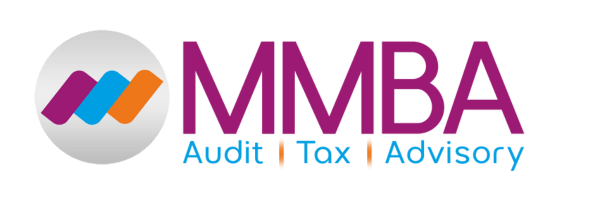
Recent Blog
Arrange a FREE Consultation Call and Let’s Discuss Your Goals!
Private healthcare has become an attractive option for many in the UK. For instance, if one needs to avoid NHS waiting times or wants to access specialist treatment, in this regard, private healthcare offers speed and flexibility. But a common question that arises is whether you have to pay VAT on private healthcare or not. For that, it is crucial to understand the tax implications around medical services, private medical insurance, and VAT exemptions for both patients and healthcare professionals. Saying so, a professional medical accountant, such as MMBA Accountants, healthcare experts, can help you in this.
Table of Contents
Do You Pay VAT on Private Healthcare in the UK?
In the UK, most private healthcare services provided by qualified and registered professionals are exempt from VAT. This means patients usually do not pay VAT on consultations, treatments, or diagnostic services. However, certain services such as cosmetic procedures, medico-legal reports, and paternity testing are subject to VAT. Understanding these rules helps both patients and healthcare providers stay compliant and avoid unexpected costs.
If you’re unsure how VAT applies to your healthcare services or private medical insurance, MMBA’s medical accountants can provide expert guidance.
Which Healthcare Services Are VAT Exempt?
There are certain medical services that are generally exempt from VAT such as services by GPs, consultants, surgeons, dentists, and opticians. These include:
- GP services
- Diagnostic consultations
- Health checks for prevention
- Dental treatments
- Eye examinations and prescriptions
These services fall under VAT exemption. The main reason is that they aim to protect, maintain, or restore the health of patients. The government treats them as essential to patient care, hence this leads to their exclusion from VAT.
However, not all services that the healthcare professionals offer are automatically VAT exempt. The exemption depends on the purpose of the service. For example:
Paternity tests, medical reports for legal proceedings, or cosmetic treatments not medically necessary are taxable services and subject to VAT charges.
Writing articles or delivering training not directly connected to patient health improvement also falls under VAT liability.
Healthcare professionals including pharmacists must be clear on the VAT obligations of their services. Charging VAT incorrectly can lead to compliance issues, errors in VAT returns, and possible penalties.
Does VAT Apply to Private Health Insurance?

As we know that the VAT may not apply to most private healthcare services, but another form of taxation does that is called Insurance Premium Tax (IPT).
Moreover, private medical insurance premiums are not subject to VAT. Professionals classify them as insurance contracts. However, it is important to note that they attract IPT at the standard rate of 12%. This tax, unlike VAT, is not related to services but is specifically applied to insurance premiums.
Key points
Key points include
- IPT is included in the total insurance premium: patients or employers don’t pay it separately.
- Insurance providers are responsible for paying IPT to HMRC.
- Long term insurance contracts, such as life insurance and income protection policies, are exempt from IPT. But private medical insurance is not.
- When evaluating private health cover, understanding the tax implications of IPT is vital. Though IPT adds to the cost, the benefits of swift treatment, specialist access, and better patient outcomes often outweigh the additional expense.
Tax Implications of Private Medical Insurance for Businesses
Private medical insurance (PMI) is often offered by employers as part of their benefits package. This offers fast-tracked healthcare for employees, reducing absenteeism and improving workforce health. But how is it treated for tax purposes?
PMI premiums are not subject to VAT, as noted earlier, but are classified as insurance contracts, hence subject to IPT.
For businesses, the premiums can be considered an allowable business expense. This means:
- Corporation tax relief may apply for limited companies.
- Unincorporated businesses can deduct the cost when calculating taxable profits.
- From the employee’s perspective, PMI is seen as a benefit in kind, and must be reported on HMRC’s P11D form. The value of the benefit is taxed accordingly.
In many cases, companies bundle PMI with other benefits like business life insurance, forming a comprehensive employee insurance plan. This enhances the value of the benefits package and helps attract top talent.
VAT Rules for Healthcare Businesses
For a VAT registered business, understanding how exempt and taxable supplies affect their VAT return is crucial. Healthcare practices often fall into a partial exemption category due to offering a mix of:
The first one is VAT exempt services (e.g., treatment). However, the second one includes taxable services (e.g., medico-legal work or cosmetic procedures). But this mix affects their ability to reclaim VAT incurred on purchases. For example:
If 80% of the practice’s income is from VAT exempt services, only a small portion of VAT on business expenses may be reclaimable. This limits the recovery of VAT on things like equipment, supplies, or admin services.
For example, care home operators may provide exempt residential care alongside taxable consultancy or ancillary services, which affects how much input VAT they can reclaim.
Healthcare professionals must review their services, determine their VAT liability, and understand how their VAT registration status impacts their financial operations. Poor VAT treatment can lead to under- or overpayment, triggering HMRC reviews.
Conclusion
Thus, in most cases the medical services provided by registered professionals are exempt from VAT. However, exceptions exist, and it’s vital to distinguish between taxable services and VAT exempt care.
For patients, this means more affordable treatment. For providers, it means being clear on VAT obligations, charging VAT where applicable, and properly handling VAT returns.
Meanwhile, insurance premium tax applies to private medical insurance, so while the service itself may avoid VAT, IPT still impacts the overall cost. Understanding these subtle distinctions makes sure accurate taxation, protects your practice, and keeps patient care at the forefront.
Frequently Asked Questions
Do you pay VAT on private healthcare in the UK?
Most private healthcare services provided by qualified doctors are exempt from VAT. This helps the patients save money on treatment.
Which certain services are not VAT exempt in private healthcare?
The services which are unrelated to medical care such as cosmetic procedures or reports may attract VAT and aren’t exempt.
How do healthcare providers ensure compliance with VAT rules?
Healthcare providers make sure compliance with VAT rules by correctly categorising services and understanding VAT obligations. In this way, professionals can avoid VAT issues and ensure compliance.
Can VAT issues affect patient savings?
Yes, incorrect VAT charges on exempt services can lead to overpayments, reducing patient savings and trust.
Why is VAT exemption important in the provision of healthcare?
It keeps essential medical services more affordable, allowing doctors to offer necessary care without adding tax costs.


